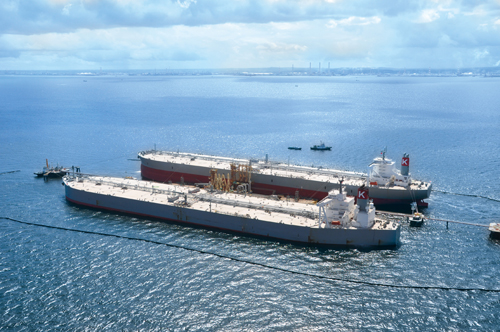Japan relies on imports for nearly 100% of its crude oil procurement. “K” LINE has made the prevention of oil spills and other accidents its highest priority for more than 70 years since it entered the oil tanker services in 1934, providing top-class services to customers around the world by conducting meticulous and safe navigation and cargo operations.
Rigorous standards for ship management systems and crew skills are required globally for the transport of crude oil and petroleum products, which are hazardous substances. In line with such requirements, all of “K” LINE’s crude oil tankers have adopted double-hull structure since 2003, and we constantly take measures such as conducting various marine and onshore training and oil spill exercises to raise skills with the aim of preventing accidents and minimizing harm.

The crude oil and petroleum products transported by “K” LINE ships are used as fuel and raw materials for various products necessary for daily life and are ever-present in our lives.
Some examples are the cassette gas that people use to cook Sukiyaki on the table at home, the gasoline used to drive cars, the jet fuel used for aircraft when taking an overseas trip, the naphtha used to make plastic bottles and the crude oil or heavy fuel oil used to run electric power plants.
“K” LINE safely transports the petroleum resources that support our lives to countries around the world through its oil tanker services.
